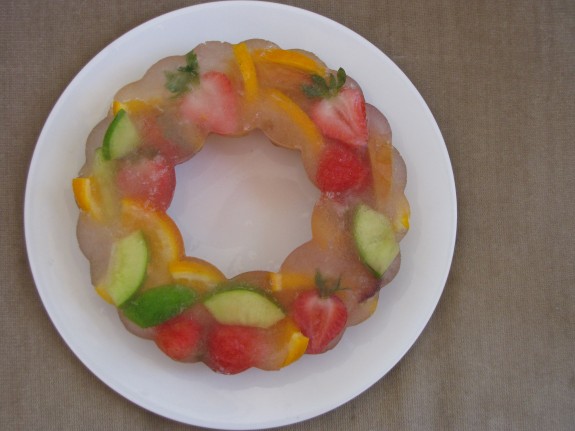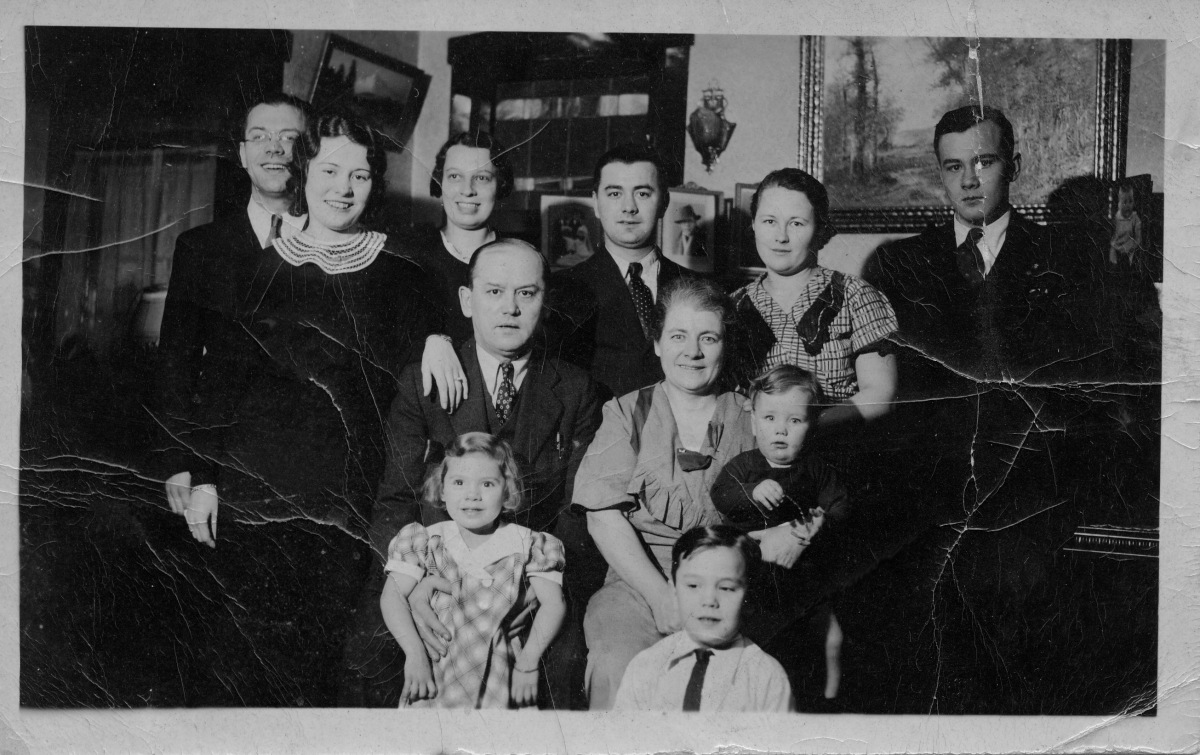When we think about preservation, the focus is often on holding on to something, and keeping it for all time. As genealogists and family historians, our work revolves around preserving all sorts of things: people, facts about their lives, photos, stories, and memorabilia.
However, sometimes it may be “better” to let go of things. I’ve been letting go of a lot of things recently, though the process started more than a decade ago.
When my dad died in 2009, my siblings and I found ourselves helping our mom downsize out of a 2-bedroom ranch (with basement) into a 3-room independent living apartment. It was astounding how much was squirreled away in the closets and drawers! I wrote about some of those struggles in one of my early blogs.
In dealing with the sheer volume of stuff, it was tricky knowing what to do with some items. While Mike’s mantra is usually, “When in doubt, throw it out,” that isn’t necessarily the right option for everything, especially when suddenly thrust into making quick decisions. Of course Mom’s motto was, “Keep it all.” She wouldn’t come out and say that, but that was what it boiled down to.
My approach was somewhere in the middle. Emptying a house is stressful, with a lot of decisions to be made. The sheer volume creates an overload. I also realized that once something was gone, it would be gone! It was sometimes wiser to postpone a decision on certain items (Mom’s antiques!), and deal with them at a later date.
Nevertheless, there were still many items that needed an immediate decision. One of those was a black silk cape from maybe the turn of the 20th century that had come from my mom’s half-aunt, Elizabeth Meintzer Ahrens. Aunt Lizzie was the oldest half sister of my mom’s father, Christoph Jacob Meintzer.
When I was a kid, the cape hung in the upstairs hall closet (home of the boxes of old photos, the bubble portrait, grass skirt, and other goodies) covered with a dry cleaning bag. When my parents moved from that house, it moved with them, into the built-in cedar closet in the basement.
It was NOT moving into independent living!
Unfortunately I don’t have a photo of it, but I remember it had rows of surface ruffles stitched down the middle, so each edge was loose. In high school I once asked Mom if I could wear it for a costume or something. She said no, that it was too fragile. She was right, of course, because it was weighted silk in very fragile condition, with the fabric splitting at the folds. It was not wearable as a costume or anything else.
What is weighted silk, and why did that cause a problem? It’s silk that’s been processed with various chemical baths to restore some of the weight lost by the silk fibers during their initial processing. You can read about it here. Why was that done? Wholesalers purchased silk by weight, not by the yard (like most fabric), so the seller received more money for weighted silk than silk that wasn’t weighted. Weighting also improved the drapeability of the fabric.
The result, though, is damage to the fabric, making it prone to premature wear. It becomes brittle, causing it to split at folds, stress points, etc. Issues preventing me (or anyone else) from wearing it. The wedding dress of Queen Elizabeth the Queen Mother (George VI’s wife), for instance, began to rot after only 30 years.
The cape had belonged to my grandmother, Minnie Moeller Meintzer. I don’t know when she got it from her sister-in-law, Elizabeth Ahrens. I also don’t know if it was given as a gift, was a hand-me-down of sorts from Elizabeth, or if Minnie had asked her to make it. I always presumed it was handmade; I don’t recall seeing any labels in it.
Elizabeth DID have experience as a seamstress. On the family’s 1881 ship’s passenger list, when she was eighteen, she had seamstress listed as an occupation. While none of her records in the United States ever listed an occupation for her, it seems reasonable that she still would have sewn for herself and other family members. One way or another, she sewed the cape and it came to my grandmother.
But what to do with it? It wasn’t moving again with my mom. She didn’t have room for it.
I finally suggested we take it to the Northbrook Historical Society. She had a couple other items to donate to them, so we were already making a trip. I thought they might have a use for it, as a display piece, perhaps. If they did not want it, we would have needed a Plan B. Fortunately it didn’t come to that! I presume they wouldn’t have accepted it if they didn’t really want it. I feel better with it in their hands, preserving it and making use of it, rather than it hanging, unappreciated, in a closet!
Another item, from Elizabeth’s younger (full) sister, Catherine, was a beaded evening bag, possibly from the 1920s? It had an unusual clasp, a chain handle that could disappear inside if you wanted a clutch bag, and scalloped fringe at the bottom.


I believe Catherine (Kate) lived with Mom’s family for a while, after she was widowed. Mom mentioned that her widowed aunts moved in with them from time to time, and they shared her room. It’s likely the purse was either left accidentally, or Kate gave it to Minnie. When Minnie died, it landed with my mom.
The purse was in better condition that the cape, but I wasn’t going to use it. Neither was my mom. There was really no point in keeping it. I was able to sell it for my mom to an antique dealer for $15. Was that selling out? I don’t think so.
It has probably found its way into the hands of someone who appreciates it and has it displayed with similar items. Had we kept it, it would have bounced from drawer to shelf and back again, eventually ending up in a box going to Goodwill, Salvation Army, or a flea market. Who knows what would have happened to it? It’s been better preserved this way, I think.
As I consider my own preemptive downsizing, I need to deal with the assorted linens I acquired from my mom—dresser scarves and whatnot, hand embroidered, with hand crocheted lace edging. When I pulled them out recently, I realized several had severe staining (makeup? perfume?) or scorch marks that probably won’t come out. Do I really want to keep damaged ones? I’m not so sure.
Maybe they’d be better off finding their way into a resale market, where someone will buy them to re-purpose? With the staining or other damage, is anyone going to use them as they are? Or would they just sit in a drawer or on a shelf? Or be thrown out?
I’ve read articles critical about antique or vintage handwork pieces being taken apart and repurposed, but I’m beginning to wonder if that might not be a reasonable approach? If an item isn’t usable intact, wouldn’t better to use the parts that are still good? It seems to show more respect to the person who made the item to preserve those parts that are useful, than to dispose of it.
So now I find myself focusing on curating my items, keeping the ones that are more important. If the volume is manageable, it’s more likely the pieces will be preserved in the long run. Is Grandma Moeller’s tablecloth at risk, with its mismatched dye lots and safety pin holding one section together? Heck, no!

But the crocheted baby bibs (suitable only for “drooling bib” use) Aunt Lillie (Minnie’s youngest sister) used to make? Probably those will move on. It was her trademark baby gift—and I’ve accumulated seven. By the looks of them, none of them were ever used! I may try to track down some of Aunt Lillie’s descendants, to see if they might like them. Since they were crocheted by their direct ancestor, they might be more inclined to preserve them than I am.
Sometimes to save something, we have to let it go. Preservation is complicated, and one size does not fit all. It’s a process we each have to work through to find the proper balance.
#52Ancestor
































